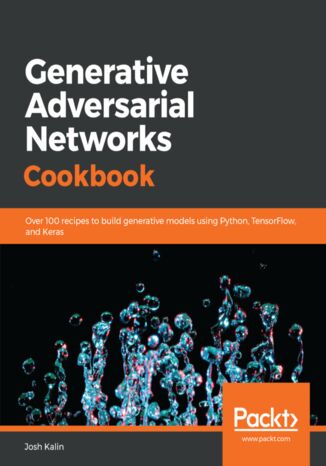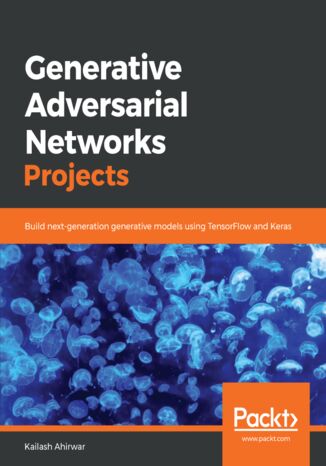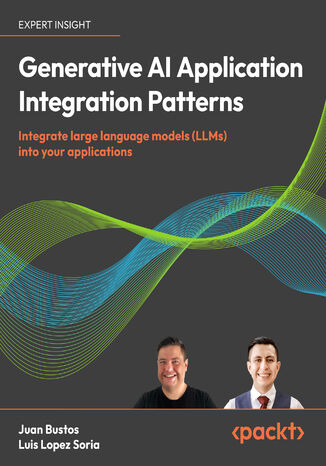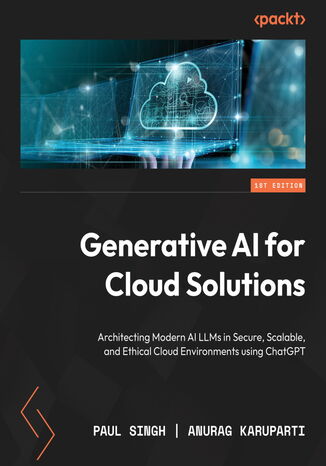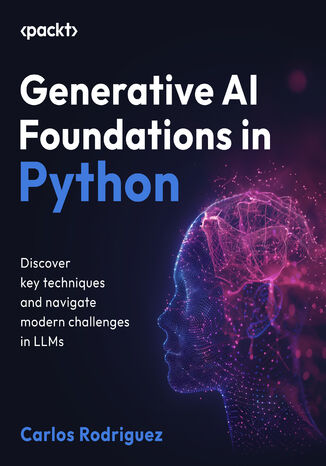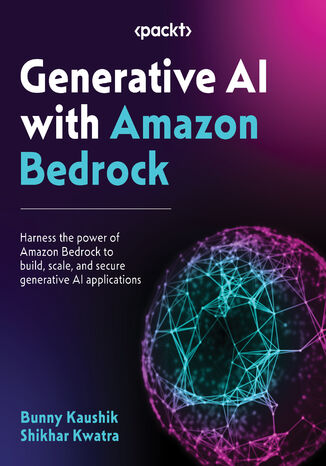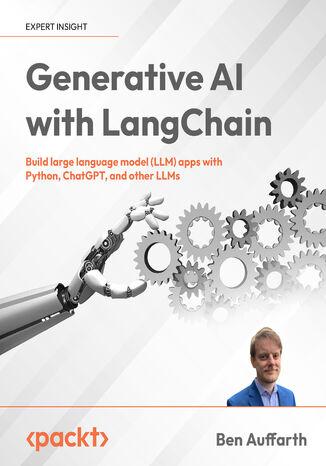Kategorien
-
- Bitcoin
- Geschäftsfrau
- Coaching
- Controlling
- E-Business
- Ökonomie
- Finanzen
- Börse und Investitionen
- Persönliche Kompetenzen
- Computer im Büro
- Kommunikation und Verhandlungen
- Kleines Unternehmen
- Marketing
- Motivation
- Multimedia-Training
- Immobilien
- Überzeugung und NLP
- Steuern
- Sozialpolitik
- Handbȕcher
- Präsentationen
- Führung
- Public Relation
- Berichte, Analysen
- Geheimnis
- Social Media
- Verkauf
- Start-up
- Ihre Karriere
- Management
- Projektmanagement
- Personal (HR)
-
- Architektura i wnętrza
- Sicherheit und Gesundheit am Arbeitsplatz
- Biznes i Ekonomia
- Haus und Garten
- E-Business
- Ekonomia i finanse
- Esoterik
- Finanzen
- Persönliche Finanzen
- Unternehmen
- Fotografie
- Informatik
- HR und Gehaltsabrechnung
- Frauen
- Computer, Excel
- Buchhaltung
- Kultur und Literatur
- Wissenschaftlich und akademisch
- Umweltschutz
- meinungsbildend
- Bildung
- Steuern
- Reisen
- Psychologie
- Religion
- Landwirtschaft
- Buch- und Pressemarkt
- Transport und Spedition
- Gesundheit und Schönheit
-
- Office-Programme
- Datenbank
- Bioinformatik
- IT Branche
- CAD/CAM
- Digital Lifestyle
- DTP
- Elektronik
- Digitale Fotografie
- Computergrafik
- Spiele
- Hacking
- Hardware
- IT w ekonomii
- Wissenschaftliche Pakete
- Schulbücher
- Computergrundlagen
- Programmierung
- Mobile-Programmierung
- Internet-Server
- Computernetzwerke
- Start-up
- Betriebssysteme
- Künstliche Inteligenz
- Technik für Kinder
- Webmaster
-
- Anthologien
- Ballade
- Biografien und Autobiografien
- Für Erwachsene
- Drama
- Tagebücher, Memoiren, Briefe
- Epos
- Essay
- Science Fiction
- Felietonys
- Fiktion
- Humor, Satire
- Andere
- Klassisch
- Krimi
- Sachbücher
- Belletristik
- Mity i legendy
- Nobelpreisträger
- Kurzgeschichten
- Gesellschaftlich
- Okultyzm i magia
- Erzählung
- Erinnerungen
- Reisen
- Gedicht
- Poesie
- Politik
- Populärwissenschaftlich
- Roman
- Historischer Roman
- Prosa
- Abenteuer
- Journalismus
- Reportage
- Romans i literatura obyczajowa
- Sensation
- Thriller, Horror
- Interviews und Erinnerungen
-
- Archäologie
- Bibliotekoznawstwo
- Filmwissenschaft
- Philologie
- Polnische Philologie
- Philosophie
- Finanse i bankowość
- Erdkunde
- Wirtschaft
- Handel. Weltwirtschaft
- Geschichte und Archäologie
- Kunst- und Architekturgeschichte
- Kulturwissenschaft
- Linguistik
- Literaturwissenschaft
- Logistik
- Mathematik
- Medizin
- Geisteswissenschaften
- Pädagogik
- Lehrmittel
- Populärwissenschaftlich
- Andere
- Psychologie
- Soziologie
- Theatrologie
- Teologie
- Theorien und Wirtschaftswissenschaften
- Transport i spedycja
- Sportunterricht
- Zarządzanie i marketing
-
- Sicherheit und Gesundheit am Arbeitsplatz
- Geschichte
- Verkehrsregeln. Führerschein
- Rechtswissenschaften
- Gesundheitswesen
- Allgemeines. Wissenskompendium
- akademische Bücher
- Andere
- Bau- und Wohnungsrecht
- Zivilrecht
- Finanzrecht
- Wirtschaftsrecht
- Wirtschafts- und Handelsrecht
- Strafrecht
- Strafrecht. Kriminelle Taten. Kriminologie
- Internationales Recht
- Internationales und ausländisches Recht
- Gesundheitsschutzgesetz
- Bildungsrecht
- Steuerrecht
- Arbeits- und Sozialversicherungsrecht
- Öffentliches, Verfassungs- und Verwaltungsrecht
- Familien- und Vormundschaftsrecht
- Agrarrecht
- Sozialrecht, Arbeitsrecht
- EU-Recht
- Industrie
- Agrar- und Umweltschutz
- Wörterbücher und Enzyklopädien
- Öffentliche Auftragsvergabe
- Management
-
- Afrika
- Alben
- Südamerika
- Mittel- und Nordamerika
- Australien, Neuseeland, Ozeanien
- Österreich
- Asien
- Balkan
- Naher Osten
- Bulgarien
- China
- Kroatien
- Tschechische Republik
- Dänemark
- Ägypten
- Estland
- Europa
- Frankreich
- Berge
- Griechenland
- Spanien
- Niederlande
- Island
- Litauen
- Lettland
- Mapy, Plany miast, Atlasy
- Miniführer
- Deutschland
- Norwegen
- Aktive Reisen
- Polen
- Portugal
- Andere
- Przewodniki po hotelach i restauracjach
- Russland
- Rumänien
- Slowakei
- Slowenien
- Schweiz
- Schweden
- Welt
- Türkei
- Ukraine
- Ungarn
- Großbritannien
- Italien
-
- Lebensphilosophien
- Kompetencje psychospołeczne
- zwischenmenschliche Kommunikation
- Mindfulness
- Allgemeines
- Überzeugung und NLP
- Akademische Psychologie
- Psychologie von Seele und Geist
- Arbeitspsychologie
- Relacje i związki
- Elternschafts- und Kinderpsychologie
- Problemlösung
- Intellektuelle Entwicklung
- Geheimnis
- Sexualität
- Verführung
- Aussehen ind Image
- Lebensphilosophien
-
- Bitcoin
- Geschäftsfrau
- Coaching
- Controlling
- E-Business
- Ökonomie
- Finanzen
- Börse und Investitionen
- Persönliche Kompetenzen
- Kommunikation und Verhandlungen
- Kleines Unternehmen
- Marketing
- Motivation
- Immobilien
- Überzeugung und NLP
- Steuern
- Sozialpolitik
- Handbȕcher
- Präsentationen
- Führung
- Public Relation
- Geheimnis
- Social Media
- Verkauf
- Start-up
- Ihre Karriere
- Management
- Projektmanagement
- Personal (HR)
-
- Anthologien
- Ballade
- Biografien und Autobiografien
- Für Erwachsene
- Drama
- Tagebücher, Memoiren, Briefe
- Epos
- Essay
- Science Fiction
- Felietonys
- Fiktion
- Humor, Satire
- Andere
- Klassisch
- Krimi
- Sachbücher
- Belletristik
- Mity i legendy
- Nobelpreisträger
- Kurzgeschichten
- Gesellschaftlich
- Okultyzm i magia
- Erzählung
- Erinnerungen
- Reisen
- Poesie
- Politik
- Populärwissenschaftlich
- Roman
- Historischer Roman
- Prosa
- Abenteuer
- Journalismus
- Reportage
- Romans i literatura obyczajowa
- Sensation
- Thriller, Horror
- Interviews und Erinnerungen
-
- Archäologie
- Philosophie
- Wirtschaft
- Handel. Weltwirtschaft
- Geschichte und Archäologie
- Kunst- und Architekturgeschichte
- Kulturwissenschaft
- Literaturwissenschaft
- Mathematik
- Medizin
- Geisteswissenschaften
- Pädagogik
- Lehrmittel
- Populärwissenschaftlich
- Andere
- Psychologie
- Soziologie
- Teologie
- Zarządzanie i marketing
-
- Lebensphilosophien
- zwischenmenschliche Kommunikation
- Mindfulness
- Allgemeines
- Überzeugung und NLP
- Akademische Psychologie
- Psychologie von Seele und Geist
- Arbeitspsychologie
- Relacje i związki
- Elternschafts- und Kinderpsychologie
- Problemlösung
- Intellektuelle Entwicklung
- Geheimnis
- Sexualität
- Verführung
- Aussehen ind Image
- Lebensphilosophien
General Besserleys Second Puzzle Box
General Besserley sat before his writing-table, drawn close up to the wide-flung windows of his summer-house, his pen clasped in his idle fingers, his eyes wandering though a tangle of drooping roses and clematis beyond the gardens below to where a car was crawling up the mountain road. He leaned a little sideways and touched a bell. In a few moments a white-coated butler opened the door and approached the table.
W gabinecie szefa sztabu Sił Powietrznych USA w brutalny sposób zostaje zamordowany czterogwiazdowy generał. Do wyjaśnienia tej sprawy oddelegowany zostaje podpułkownik Jensen z wydziału dochodzeniowego Sił Powietrznych. Z gabinetu generała morderca zabrał wszystkie dyskietki komputerowe oraz twardy dysk. Wszystko wskazywało też na to, że przed śmiercią ofiara poddana została torturom, stosowanym przez... północnych Wietnamczyków podczas konfliktu w Indochinach...
Juliusz Kaden-Bandrowski - "Generał Barcz". "Generał Barcz" to wciągająca powieść o trudnych początkach niepodległej Polski po 1918 roku. Kaden-Bandrowski ukazuje burzliwy proces tworzenia nowej władzy, gdzie euforia z odzyskanej niepodległości szybko ustępuje miejsca politycznym intrygom i konfliktom. W centrum wydarzeń stoi tytułowy generał Barcz - postać, której silna ręka wydaje się być jedynym ratunkiem dla młodego państwa. Autor, wykorzystując autentyczne wydarzenia z lat 1918-1919, zadaje uniwersalne pytania o rolę jednostki w kształtowaniu historii. Powieść przenosi czytelników do Krakowa, Przemyśla i Warszawy, oferując fascynujący obraz politycznej walki o przyszłość Polski. To lektura obowiązkowa dla wszystkich zainteresowanych historią i polityką, pełna napięcia, dramatyzmu i głębokiej refleksji nad naturą władzy.
Generał Franco. Generał Franco
Dla światowej lewicy i wszelkiego rodzaju postępowców Franco pozostał na wieczne czasy bte noire ulubionym wrogiem numer jeden. Dlaczego tak się stało i wciąż tak się dzieje? Można podać mnóstwo powodów: choćby dlatego, że pokonał komunistów, że nie był antysemitą, że uchronił swój kraj przed kataklizmem wojny światowej, że za jego rządów Hiszpania przeżywała okres niezwykle dynamicznego rozwoju gospodarczego i cywilizacyjnego. Był łasy na wszelkie zaszczyty. Z pasją i skutecznie kolekcjonował tytuły i honory zarówno świeckie, jak i kościelne. Był m.in. doktorem honoris causa najstarszego hiszpańskiego uniwersytetu w Salamance, założonego w 1200 roku. Papież Pius XII podniósł Franco do godności kanonika de San Liberato oraz wyróżnił najwyższym watykańskim odznaczeniem Orderem Chrystusa. Obligatoryjnie tytułowano go Jego Ekscelencja. Mimo że był urodzonym wodzem, zawodowym żołnierzem, w zasadzie był typem polityka gabinetowego. Lubił i umiał przemawiać, zdarzało się, że potrafił porywać tłumy, ale nie był ludowym trybunem. Widocznie miał świadomość, że jego aparycja nie zawsze i nie dla każdego jest przekonująca. Wielki mały człowiek, chciałoby się powiedzieć. Powierzchowność miał przeciętną, choć raczej miłą, a nawet poczciwą. Faktycznie, gdyby odebrać mu obwieszony orderami, przepasany szarfami i wstęgami galowy mundur generalissimusa, wszelkie insygnia wodzowskiej władzy, monarsze splendory i wypuścić na ulicę bez obstawy, to wyglądałby banalnie, jak np. podrzędny notariusz z prowincji zagubiony w stolicy albo farmaceuta z małego miasteczka, który wybrał się do dużego miasta, aby zakupić trochę preparatów. Jego cywilna, drobnomieszczańska prowincjonalność bywała wręcz rozczulająca. Był bodaj czy nie ostatnim mężem stanu tej rangi, który regularnie nosił getry.
Generał i Diuk. Tajemnice rządu Sikorskiego i Polskich Sił Zbrojnych na Zachodzie
Tajemnice rządu RP na uchodźctwie, sekrety naczelnego wodza i Polskich Sił Zbrojnych na Zachodzie aż do katastrofy gibraltarskiej w 1943 roku. Premier polskiego rządu na uchodźstwie nie wątpił, że Polska znajdzie się w gronie państw zwycięskich i usiłował wzmocnić sytuację geopolityczną Polski w ramach nowego, powojennego rozdania. Rozpoczął tworzenie federacji państw środkowo-europejskich z Rzeczpospolitą jako ośrodkiem wiodącym. Gwarantem trwałości nowego tworu politycznego miała być Wielka Brytania. W tym celu Sikorski snuł plany unii personalnej Zjednoczonego Królestwa i odrodzonego królestwa polskiego. Na tronie federacji środkowo-europejskiej miał zasiąść Jerzy Windsor a plan postawienia na jej czele księcia Kentu stanowił, jak zapisał sekretarz Sikorskiego, Karol Estreicher, największą polityczną tajemnicę Jenerała. Czy w latach trzydziestych Władysław Sikorski próbował siłą obalić władze sanacyjne ,a we wrześniu 1939 roku dokonał zamachu stanu? Dlaczego polski rząd tworzył obozy koncentracyjne na terenie Wysp Brytyjskich dla przeciwników politycznych? Czym była Wyspa Węży i ośrodek w Shinafoot? Czy w najbliższym otoczeniu premiera znajdowali się agenci obcych mocarstw? Dlaczego ogromna część żydowskich żołnierzy dezerterowała z polskiej armii? Czy Sikorski prowadził tajne negocjacje z Niemcami i Sowietami? Jaką rolę odegrali Polacy w brytyjskiej misji Rudolfa Hessa i dlaczego próbowali go zabić? Jak wyglądały kilkukrotnie powtarzane próby zamachu na premiera RP? Dlaczego powołanie unii polsko-czechosłowackiej, które było jednym z centralnych punktów programu polskiego rządu, nie doszło do skutku? Tajemnica zamachu w Gibraltarze - jak zginął naczelny wódz? Co kryją jeszcze brytyjskie archiwa, skoro Home Office przesunął klauzulę tajności wielu dokumentów dotyczących Sikorskiego na kolejne dziesięciolecia? Czy kiedykolwiek poznamy dokumenty skrywane w moskiewskich archiwach? Bo przecież rękopisy nie płoną
Rok 2004. W podwarszawskim Konstancinie, przy słynnej ścieżce zdrowia w lesie chojnowskim, policja po anonimowym telefonie odnajduje zwłoki dwóch amerykańskich turystek. Do śledztwa włącza się rezydentura FBI. Atrakcyjna porucznik Hanah Torres w duecie z polskim komisarzem Andrzejem Kuleszą ruszają tropem psychopatycznego mordercy, który w okrutny sposób zabija kolejne ofiary. Podczas odkrywania przez śledczych brutalnych kart popełnionych przez seryjnego zbrodni, szybko się okaże, że Hanah i Andrzeja oprócz spraw zawodowych łączą rodzinne koligacje sprzed dziesięcioleci, a także - narastające uczucie. "Generał zemsty" to książka dla Czytelnika, który lubi połączenie misternie utkanego kryminału, trzymającego w napięciu thrillera i romansu ze zjawiskami paranormalnymi w tle.
Unveil the extraordinary capabilities of the groundbreaking AI model, DALL-E 3, as it transforms text prompts into accurate images. This book addresses the challenge of creating meaningful images by writing prompts, guiding you step by step through creating stunning visual art regardless of your skill level.Prepare to delve deep into the inner workings of DALL-E 3's architecture and training process. With clear explanations, practical tutorials, and real-world examples that can be easily applied, you’ll unlock secrets to creating awe-inspiring AI-generated art, from fine art prints to digital designs. This book provides comprehensive insights into various lens options, camera angles, lighting techniques, and art movements, helping you integrate AI capabilities with your artistic skills. You’ll also learn to create NFTs that can be monetized and gain invaluable insights into designing compelling covers, all within the ethical boundaries of AI-generated art. And with the invaluable prompt cheat sheet by your side, you’ll hone your skills in formulating captivating prompts for diverse purposes.By the end of this book, you’ll have learned how to produce generative AI art at a rapid pace and relatively low cost and push the boundaries of imagination with DALL-E 3.
Developing Generative Adversarial Networks (GANs) is a complex task, and it is often hard to find code that is easy to understand.This book leads you through eight different examples of modern GAN implementations, including CycleGAN, simGAN, DCGAN, and 2D image to 3D model generation. Each chapter contains useful recipes to build on a common architecture in Python, TensorFlow and Keras to explore increasingly difficult GAN architectures in an easy-to-read format. The book starts by covering the different types of GAN architecture to help you understand how the model works. This book also contains intuitive recipes to help you work with use cases involving DCGAN, Pix2Pix, and so on. To understand these complex applications, you will take different real-world data sets and put them to use.By the end of this book, you will be equipped to deal with the challenges and issues that you may face while working with GAN models, thanks to easy-to-follow code solutions that you can implement right away.
Generative Adversarial Networks (GANs) have the potential to build next-generation models, as they can mimic any distribution of data. Major research and development work is being undertaken in this field since it is one of the rapidly growing areas of machine learning. This book will test unsupervised techniques for training neural networks as you build seven end-to-end projects in the GAN domain.Generative Adversarial Network Projects begins by covering the concepts, tools, and libraries that you will use to build efficient projects. You will also use a variety of datasets for the different projects covered in the book. The level of complexity of the operations required increases with every chapter, helping you get to grips with using GANs. You will cover popular approaches such as 3D-GAN, DCGAN, StackGAN, and CycleGAN, and you’ll gain an understanding of the architecture and functioning of generative models through their practical implementation.By the end of this book, you will be ready to build, train, and optimize your own end-to-end GAN models at work or in your own projects.
Juan Pablo Bustos, Luis Lopez Soria, Dr. Ali Arsanjani
Explore the transformative potential of GenAI in the application development lifecycle. Through concrete examples, you will go through the process of ideation and integration, understanding the tradeoffs and the decision points when integrating GenAI.With recent advances in models like Google Gemini, Anthropic Claude, DALL-E and GPT-4o, this timely resource will help you harness these technologies through proven design patterns.We then delve into the practical applications of GenAI, identifying common use cases and applying design patterns to address real-world challenges. From summarization and metadata extraction to intent classification and question answering, each chapter offers practical examples and blueprints for leveraging GenAI across diverse domains and tasks. You will learn how to fine-tune models for specific applications, progressing from basic prompting to sophisticated strategies such as retrieval augmented generation (RAG) and chain of thought.Additionally, we provide end-to-end guidance on operationalizing models, including data prep, training, deployment, and monitoring. We also focus on responsible and ethical development techniques for transparency, auditing, and governance as crucial design patterns.
Generative AI Art. Unleash Your Creativity with Generative AI Art for Beginners
The course introduces the basic concepts of artificial intelligence and its application in art, making it accessible even to those without a technical background. This foundation paves the way for exploring the nuances of effective prompt crafting, a critical skill for generating bespoke AI artwork.The course focuses on hands-on demonstrations with leading AI art software, including Craiyon and Midjourney, offering step-by-step guides to harness these tools effectively. Through practical examples, learners will understand how to navigate image prompts, masking techniques, framing, and lighting to enhance the visual appeal of their creations. The significance of navigating these elements is underscored, highlighting their role in achieving consistency and originality in AI-generated art.The course wraps up by delving into the remixing of popular art styles, the art of creating compelling text prompts, and the critical aspects of image rights, ethics, privacy, and originality in the digital art space. By concluding with recommended resources, learners are equipped to continue their journey in AI art, fueled by inspiration and a solid understanding of the field's possibilities and responsibilities.
Paul Singh, Anurag Karuparti, John Maeda
Generative artificial intelligence technologies and services, including ChatGPT, are transforming our work, life, and communication landscapes. To thrive in this new era, harnessing the full potential of these technologies is crucial. Generative AI for Cloud Solutions is a comprehensive guide to understanding and using Generative AI within cloud platforms.This book covers the basics of cloud computing and Generative AI/ChatGPT, addressing scaling strategies and security concerns. With its help, you’ll be able to apply responsible AI practices and other methods such as fine-tuning, RAG, autonomous agents, LLMOps, and Assistants APIs. As you progress, you’ll learn how to design and implement secure and scalable ChatGPT solutions on the cloud, while also gaining insights into the foundations of building conversational AI, such as chatbots. This process will help you customize your AI applications to suit your specific requirements.By the end of this book, you’ll have gained a solid understanding of the capabilities of Generative AI and cloud computing, empowering you to develop efficient and ethical AI solutions for a variety of applications and services.
Generative AI Foundations in Python. Discover key techniques and navigate modern challenges in LLMs
Carlos Rodriguez, Samira Shaikh
The intricacies and breadth of generative AI (GenAI) and large language models can sometimes eclipse their practical application. It is pivotal to understand the foundational concepts needed to implement generative AI. This guide explains the core concepts behind -of-the-art generative models by combining theory and hands-on application.Generative AI Foundations in Python begins by laying a foundational understanding, presenting the fundamentals of generative LLMs and their historical evolution, while also setting the stage for deeper exploration. You’ll also understand how to apply generative LLMs in real-world applications. The book cuts through the complexity and offers actionable guidance on deploying and fine-tuning pre-trained language models with Python. Later, you’ll delve into topics such as task-specific fine-tuning, domain adaptation, prompt engineering, quantitative evaluation, and responsible AI, focusing on how to effectively and responsibly use generative LLMs.By the end of this book, you’ll be well-versed in applying generative AI capabilities to real-world problems, confidently navigating its enormous potential ethically and responsibly.
Leonid Kuligin, Jorge Zaldívar, Maximilian Tschochohei, Harrison Chase
The rapid transformation and enterprise adoption of GenAI has created an urgent demand for developers to quickly build and deploy AI applications that deliver real value. Written by three distinguished Google AI engineers and LangChain contributors who have shaped Google Cloud’s integration with LangChain and implemented AI solutions for Fortune 500 companies, this book bridges the gap between concept and implementation, exploring LangChain and Google Cloud’s enterprise-ready tools for scalable AI solutions.You'll start by exploring the fundamentals of large language models (LLMs) and how LangChain simplifies the development of AI workflows by connecting LLMs with external data and services. This book guides you through using essential tools like the Gemini and PaLM 2 APIs, Vertex AI, and Vertex AI Search to create sophisticated, production-ready GenAI applications. You'll also overcome the context limitations of LLMs by mastering advanced techniques like Retrieval-Augmented Generation (RAG) and external memory layers.Through practical patterns and real-world examples, you’ll gain everything you need to harness Google Cloud’s AI ecosystem, reducing the time to market while ensuring enterprise scalability. You’ll have the expertise to build robust GenAI applications that can be tailored to solve real-world business challenges.
The concept of generative artificial intelligence has garnered widespread interest, with industries looking to leverage it to innovate and solve business problems. Amazon Bedrock, along with LangChain, simplifies the building and scaling of generative AI applications without needing to manage the infrastructure.Generative AI with Amazon Bedrock takes a practical approach to enabling you to accelerate the development and integration of several generative AI use cases in a seamless manner. You’ll explore techniques such as prompt engineering, retrieval augmentation, fine-tuning generative models, and orchestrating tasks using agents. The chapters take you through real-world scenarios and use cases such as text generation and summarization, image and code generation, and the creation of virtual assistants. The latter part of the book shows you how to effectively monitor and ensure security and privacy in Amazon Bedrock.By the end of this book, you’ll have gained a solid understanding of building and scaling generative AI apps using Amazon Bedrock, along with various architecture patterns and security best practices that will help you solve business problems and drive innovation in your organization.
ChatGPT and the GPT models by OpenAI have brought about a revolution not only in how we write and research but also in how we can process information. This book discusses the functioning, capabilities, and limitations of LLMs underlying chat systems, including ChatGPT and Gemini. It demonstrates, in a series of practical examples, how to use the LangChain framework to build production-ready and responsive LLM applications for tasks ranging from customer support to software development assistance and data analysis – illustrating the expansive utility of LLMs in real-world applications.Unlock the full potential of LLMs within your projects as you navigate through guidance on fine-tuning, prompt engineering, and best practices for deployment and monitoring in production environments. Whether you're building creative writing tools, developing sophisticated chatbots, or crafting cutting-edge software development aids, this book will be your roadmap to mastering the transformative power of generative AI with confidence and creativity.








